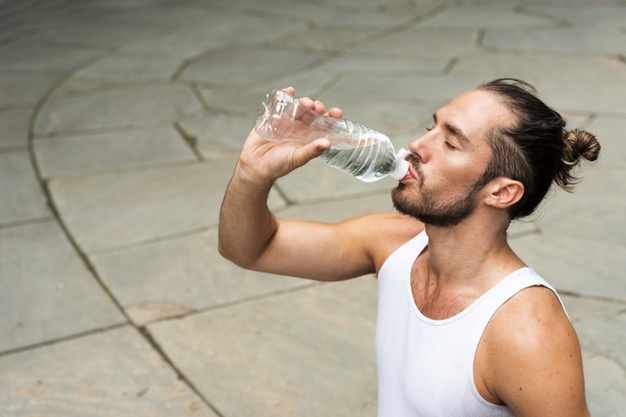How much water should you drink when running?
Everything you need to know to stay hydrated

For years, we’ve been told to drink eight glasses of water a day and that by the time we’re thirsty, we’re already dehydrated. When it comes to running, we’ve been told to drink fluids every 20 minutes and to sip electrolytes to stay hydrated. But what if I told you all that advice was B.S?
Professor Karen Dwyer is a middle to long distance runner and Nephrologist – a doctor who manages people with acute and chronic kidney disease. With a marathon personal best time of 2:58 she knows a thing or two about running and fluid assessment and replacement.
Dwyer says being dehydrated can be problematic, as can too much fluid, and that forcing yourself to drink between six and eight glasses of water a day or a rudimentary amount of water when running is not advisable.
“When people use the term dehydration, they usually refer to what doctors call volume depletion or hypovolaemia,” says Dwyer.
“Volume depletion is a reduction in the volume of water in the blood vessels. But dehydration is different and is less common. It’s the loss of water from both blood vessels and the body’s cells.”
Know the signs of dehydration
Common symptoms of dehydration include fatigue, dry eyes, dry mouth, cramps, headache and muscle spasms, concentrated urine, an increased heart rate and saggy skin (when the skin on the back of your hand doesn’t snap back from being pinched). Moderate dehydration can cause confusion and fainting in runners. If not treated quickly, dehydration can progress to heat stroke, which can cause death.
A glass more than half full
Water makes up around 60 per cent of our total body weight and our bodies need adequate hydration to function normally. Water maintains our body temperature and cushions our joints. Our body’s cells rely on water, as does our circulatory, respiratory, gastrointestinal and neurological systems.
When we run, we lose fluid by breathing and sweating to keep our core body temperature within safe limits – around 37-38°C. And despite what many people think, low level dehydration is completely normal and temporary for many athletes and runners.
“Drinking when you are thirsty maintains your body’s water level within about one to two per cent of its ideal state. For most people, this is absolutely fine. Even for athletes, a loss of around one per cent won’t have a negative impact upon performance,” says Dwyer.
But Dwyer says runners need to remember that over hydration can be fatal. Cases of exercise-associated hyponatraemia have risen over the past two decades (including a number of deaths in marathons and other endurance events), and health professionals believe the ‘drink lots of water’ message has been a contributing factor.
“Marathon runners are most susceptible to thinking they need to guzzle water or fluid replacements, but they only lose around 2.5 litres of fluid through sweat, and this is easily replaceable after crossing the finish line,” says Dwyer.
How much water should I drink?
There is no standard fluid recommendation for runners because every runner has a different sweat rate, speed, body size, and training program. How much you need to drink comes down to how active you are, the weather and your physiology.
Research shows that runners aren’t great at judging how much fluid they lose when running. One study had 18 experienced runners estimate their fluid intake and sweat loss during a workout. The atheletes underestimated their sweat loss by 42 per cent and the study concluded that runners shouldn’t depend on self-assessment to maintain adequate hydration, rather they should opt for a predetermined fluid intake plan to maintain more optimal hydration.
On the contrary, many experts including Dwyer the International Marathon Medical Directors Association, now recommend runners drink only when they are thirsty – not as a strategy to prevent dehydration.
Do a sweat test
A good way to find out your hydration status is a sweat test. By becoming more familiar with how much fluid you lose under different exercising conditions, you can learn how to better manage your fluid needs during exercise, helping to maintain hydration and ultimately your performance.
To do this, weigh yourself, without clothing, before and after a long run. If you’ve only lost one to two per cent of your body weight, you’re in the hydration sweet spot. If you’ve lost more than two to three percent of your body weight, try drinking some more during your long runs. Check out this fluid loss calculator.
Replace lost fluids
During more intense or longer periods of exercise you may need to replace more fluid than you have lost (up to 1.5 times what you have lost). This is to account for continued sweat and urinary losses during the recovery period.
Therefore, it is advised to slowly rehydrate, by replacing the recommended volume of fluid over a two to six-hour period post exercise, this is particularly important if you plan to undertake another exercise session within 12 hours.



